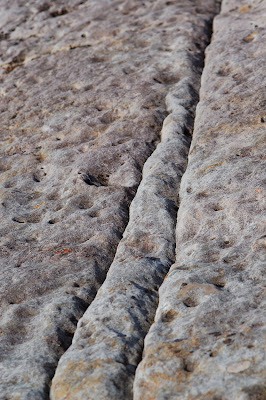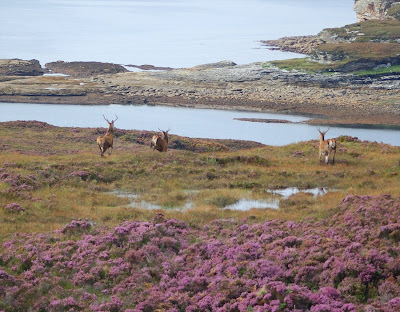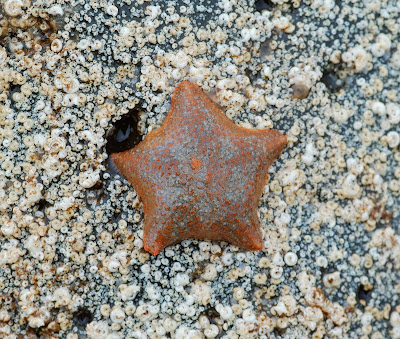As the weather was horrendous (torrential rain/sleet) I thought I'd take a short, easy walk... a walk without any possibility of getting lost or stranded in the middle of nowhere....but it still ended up being a miserable trudge :(
The shoreline from Broadford to Luib borders the narrow strait between Skye and the isle of Scalpay and is mostly pebble-beach with swathes of yellowish-brown fucoid seaweeds further out. The main road is close to the shore but is almost undetectable due to the small birch wood that lies between the two. Because there is no footpath and few houses nearby, the shore is very quiet and undisturbed. The birch wood has a great variety of fungi (I was unable to identify most) including Lactarius sp., Leccinum sp. and lots of Birch Polypore (Piptoporus betulinus).


It rained so heavily that I was unable to see through my glasses so I probably missed a lot of birds, but I did see a lone oystercatcher, a young heron and I could hear curlews merrily curlewing away through the pluvial onslaught.
At some point (after being soaked to the skin), I'd had enough and decided to walk to the next bus-stop and hopefully catch a bus back. I walked/sloshed to Luib and as there was no other shelter, I stood in the phone-box at the edge of the road for an hour til the bus came. That was a long hour I can tell you: by that time I was starting to feel cold, most of my stuff was dripping wet (maps included) and a combination of walking and wet boots/slipping socks had really blistered my feet.





















.jpg)
.jpg)



